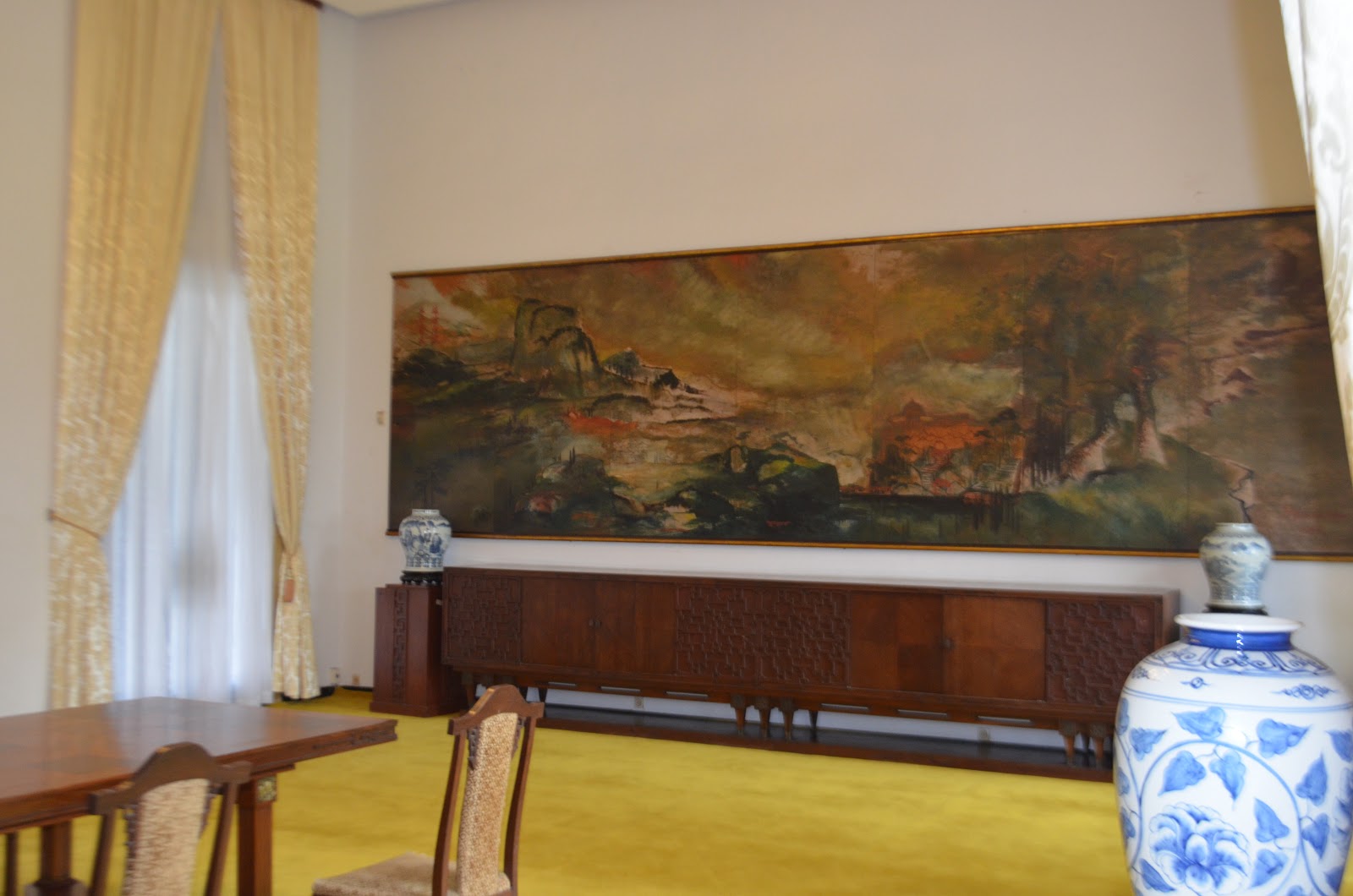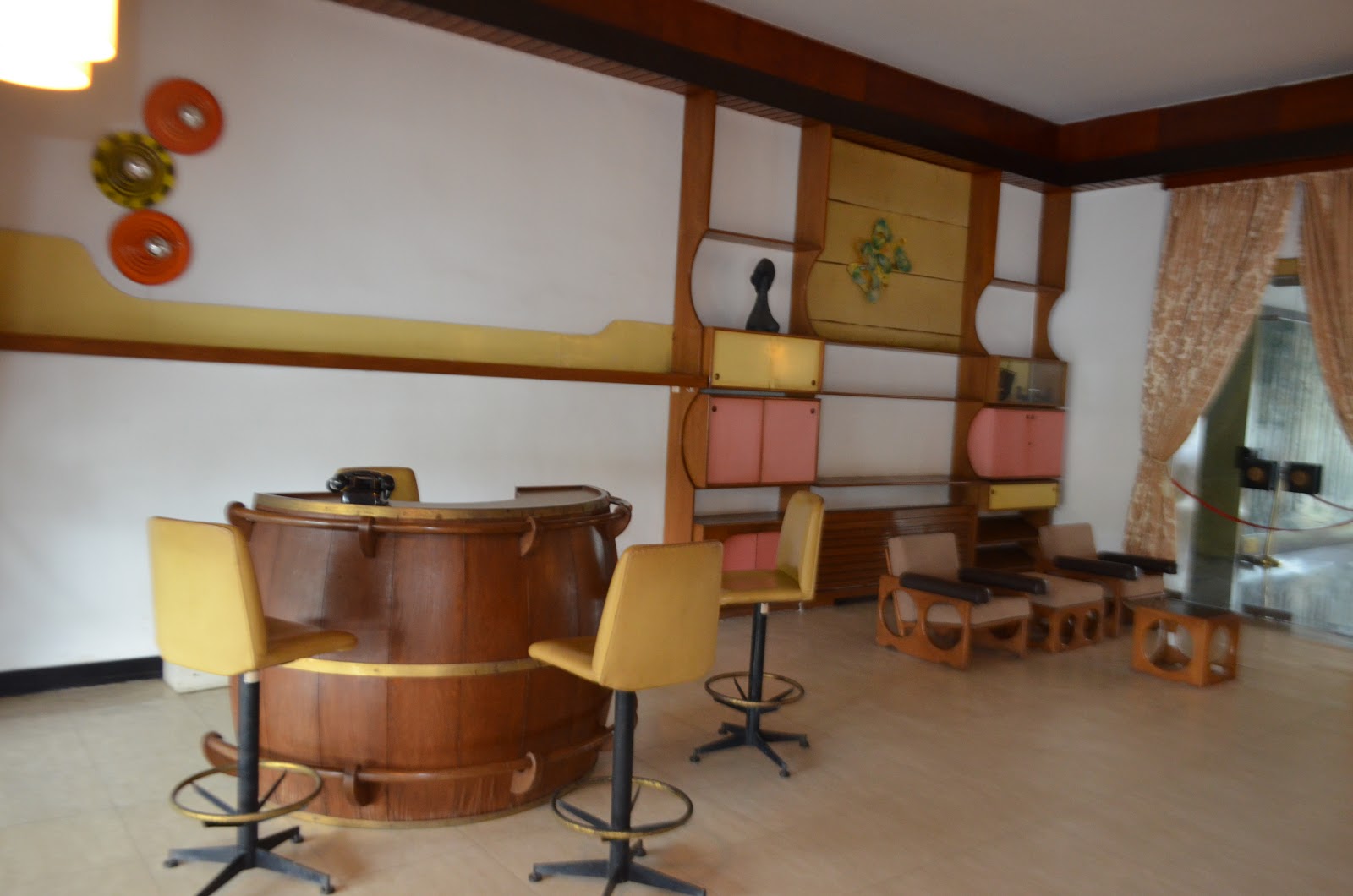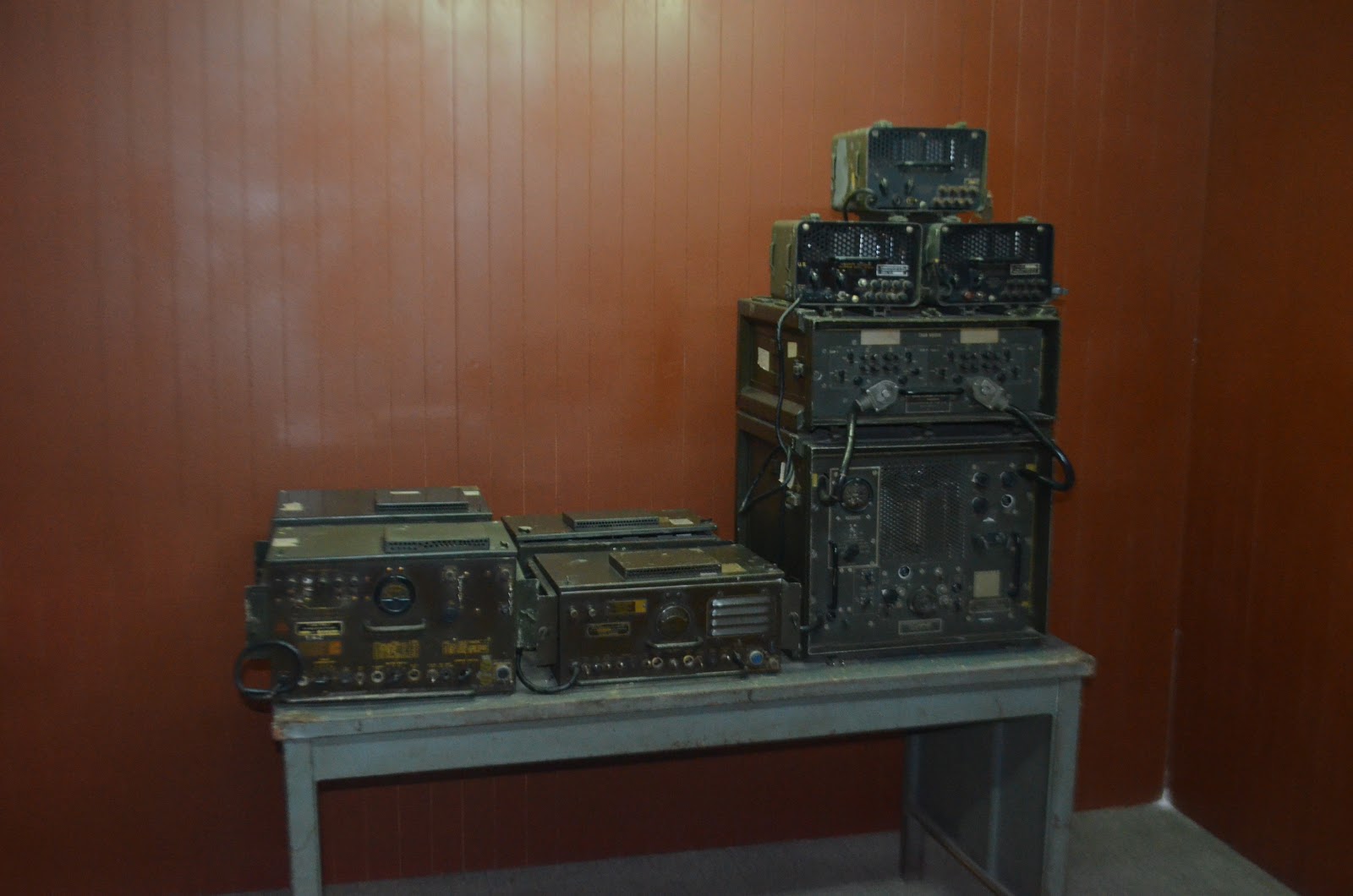I visited one of the most fascinating "museums" I have ever been to, the Reunification Palace. It is the former residence and offices of the President of South Vietnam. Obviously, such an office no longer exists as of April 30, 1975. After the gates of this palace were breached that day by 2 tanks of the Vietcong, the then President of South Vietnam was escorted to the building of Radio Saigon to announce the surrender of South Vietnam to the North.
What makes a tour of the palace so fascinating is that practically everything inside was frozen in time. Visitors are allowed in just about every room of the palace. Built in the 1960's the architecture and decor ("drab modern") are of that period, as you will see in the photos. Nothing inside the palace was destroyed or damaged. It is as though the President of South Vietnam and his family just packed their bags one day and left, leaving everything else in place. What is equally fascinating are the labyrinth of "war rooms" in the basement of the palace which was the command post for the military operations of the army of the South. Here as well, the metal furniture, maps, and radio equipment are all in place.
 |
| Palace Gates |
 |
| From the balcony of the second floor, the Vietcong displayed their flag after having breached the gates of the palace and the President surrendered. |
 |
| The actual tanks which breached the gates are on display on the lawn of the palace. |
 |
| The main stairway at the entrance to the palace. Off the lobby on both sides of the stairway are a series of conference rooms and a small auditorium. |
 |
| A first floor conference room. |
 |
| Another first floor conference room. |
 |
| A small "auditorium" of the first floor with an obvious post-April 30, 1975 addition on the stage at the back wall. |
 |
| A war room on the second floor outside the private office of the President. (Vinyl coverings are a later addition.) |
 |
| President's private office on the second floor. |
 |
| Opposite the President's desk. |
 |
| View from the second floor center balcony. |
 |
| The main stairway viewed from the second floor. |
 |
| The private living quarters of the President and his family were on the perimeter of this interior garden on the second floor of the palace. |
 |
| A bedroom. |
 |
| Formal dining room. (Only room which was entirely behind plexiglass. I guess they did not want anyone to steal the silver!) |
 |
| A bedroom. |
 |
| Trophy wall in the courtyard garden. |
 |
| Informal dining room. |
 |
| Small theatre on second floor. |
 |
| Family rec room. |
 |
| Helipad is the roof of the second floor. This helicopter was intended to evacuate the President, but too late! |
 |
| Open air entertainment area on the third floor of the palace. |
 |
| Roof-top patio on the third floor. |
 |
| The original radio antennae. |
The next photos will be from the basement command post for military operations during the war and the basement kitchen. The maps, metal desks, phones, and radio equipment are the actual ones which were used during the war.
 |
| Desk and chair used by the President in the basement command post. |
 |
| The basement command post was a maze of offices. This corridor was the way out. |
What tour of a palace would be complete without a visit to the kitchen!
 |
| Remember the days when things were "Made in Japan"? |
At the opposite end of the wide tree lined boulevard from the Palace is Notre Dame Cathedral. It seemed to me to be appropriate to end with these final 2 photos.





































































No comments:
Post a Comment